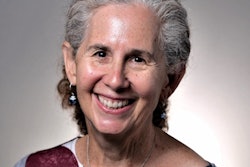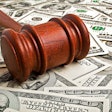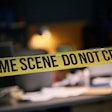
The novel coronavirus and COVID-19 are not gone and have not diminished. We are still in the first wave. We do not have a vaccine yet. We are all doing our part to social distance, wash our hands, and wear masks.
However, the majority of dental practices are back to work. It is the same dentistry with a twist. Dentistry has done infection control well since the mid-1980s when we started to understand HIV/AIDS and its ensuing pandemic. We have come a long way to protect ourselves and our patients.
Depending on the age of the reader, this is not your first pandemic, and it may not be your last -- but what is old is new again. A lot more infection control and a lot more barrier protections are now in place. During the practice pause, the majority of dental offices around the world set into action new protocols and procedures and installed new engineering safeguards. We had conversations with our patients, explaining what we were waiting for, in terms of start date, and what to expect when we opened.
The CP (corona pause)
 Sheri B. Doniger, DDS.
Sheri B. Doniger, DDS.During our three-month CP (corona pause, as I like to call it) and our hundreds of hours of continuing education, my team and I were eager to be back to work. It was interesting because Illinois was not the first state to open due to the spike in the number of cases and a curve that would not go down, let alone flatten. We watched from the sidelines to see how practices in Nebraska and other states fared with their openings.
So, what did I learn, from the sidelines, watching my colleagues start their practices again? In addition to utilizing a lot more infection control and barrier protections, many practices took this time to reinvent themselves. They reset their practices, as it were. Some started in-house membership plans (ours had been in place for years) to accommodate patients who suddenly did not have employer plans. Speaking of benefits, others decided to drop benefit contracts that were not beneficial to them. Despite the increasing costs of personal protective equipment (PPE), many practices that were in contractual plans would not receive any increase in fees or reimbursement for PPE. Some plans did step forward, but not many, so cancellations of contracts occurred. Many went with touchless payments and most of us utilized telemedicine for the first time.
A new beginning
Practices had the benefit of a new beginning. It was as if we were opening the office afresh, with the potential of creating policies and procedures more beneficial to the practice and team. New policies are being implemented -- and some are policies that our business managers have wanted us to do for years.
Payment at time of service is now becoming more of a reality in many practices. In addition, many have implemented not only a deposit for appointment but also an enforceable cancellation policy. Appointments need to be confirmed 48 hours prior and a fee will be charged if there is a broken appointment. If, in the age of PC (post-COVID), two appointments are canceled (or whatever parameter is set forth by the practice), patients are either informed the first available appointment is four months in the future or asked not to return.
With the spacing of appointments and the need to prescreen, the ability to call someone to fill in a last-minute cancellation may not be an easy task. Yes, many practices now have large backlogs of preventive and operative patients who were canceled in March, April, and May, and many of those patients are still working from home, but it may not be as easy as it once had been to fill in last-minute openings.
Once practices could open, their schedules looked a little different. More time between patients, more time for infection control, more PPE, and less use of aerosols. The ADA is recommending we maintain a 15-minute wait prior to disinfecting patient treatment rooms after aerosol-generating procedures. Regardless of the social distancing, it appeared patients were anxious to return. Many practices experienced a surge in patient visits for the first several weeks.
My practice
Illinois allowed dentists to open in the middle of May. I preferred to wait until the middle of June to reopen, due to the ubiquitous shortage of PPE.
When we did open, with social distancing of patients and a newly decided plan to treat the most vulnerable patients early in the day, we found our patients were grateful for the focus on their safety. We listened to their tales of quarantine, learned about new bread-making skills, and heard about funny Zoom experiences. We told them the worst part of the lockdown was staying away from them. Patients appreciated the prescreening and they didn't mind the car check-in.
We have had only one patient who refused to fill out the screening form and one honorable young man who said he was unable to guarantee he was not around anyone who was infected, so he preferred to wait until December for his appointment. We have had a few patients defer their March-April-May appointments to the end of summer because they just weren't ready. We get it. I'm sure every practice has had several of these patients who want to wait a little bit longer.
For our practice, we decided we like the lighter schedule and a little more time between patients. We enjoy explaining our new protocols to patients. We are so close to retiring that many have asked why we didn't take this time to put that ball in motion. What's my reason for staying? We truly missed our patients. We are happy to be back. We will continue to practice safe dentistry and take care of our team and our patients who have entrusted their oral care to us.
One of the new additions to the PPE protocol is a face shield. After seeing the splatter on the shield after the patient is dismissed, I wonder why we never used face shields before this time. I am also becoming a fan of the surgical scrub cap. In pre-COVID days, we were using the ultrasonic, air polisher, air-water syringe, and handpieces multiple times during the day. All that splatter had to go somewhere. I will leave the visual there. Face shields and scrub caps are in my office to stay!
The 'good old days'?
After this initial bump in production as we catch up, practices may not be as productive after the coronavirus hiatus. It may take a while to get back to a consistent level. Unfortunately, in the dental practice, our jobs are first and third on the risk list for aerosol contamination. We were always at risk. We will continue to do what we need to do to provide a safe environment for everyone. We are back to doing what we love -- dentistry. The rest will fall into place.
Some of us yearn for the days of unfettered use of ultrasonics and air polishers. Others remember a time, some more distant than others, of being in school and learning how to use the rubber dam, hand scale, and polish. Don't get me wrong: I miss using my ultrasonic. But for now, in this moment in time, we all have to sacrifice a little to decrease aerosols and keep everyone healthy.
I am happy to be back. We missed our patients. They missed the interactions. It may be a little muffled under the mask and face shield, but I am confident they can still see us smiling and know we are there for them. It's all good.
Sheri B. Doniger, DDS, practices clinical dentistry in Lincolnwood, IL. Her book, Practical Practice Solutions in Dentistry, is available on amazon.com. You can reach her at [email protected].
The comments and observations expressed herein do not necessarily reflect the opinions of DrBicuspid.com, nor should they be construed as an endorsement or admonishment of any particular idea, vendor, or organization.



















